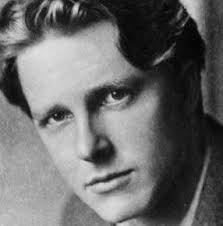The Emperor of Ice-cream
The Emperor of Ice-cream
The emperor
of ice-cream is the most popular poem of Wallace Stevens. Stevens “plots” this
story into two equal stanzas: one for the kitchen where the ice-cream is being made,
and another for the bedroom where the corpse await decent covering.
The very
title of the poem ‘the Emperor ice-cream’ is a catchy one because the poet is
talking about the emperor in the age of democracy. All emperor are remain in
the pages of history only. Moreover the poet is talking about ‘the emperor of
ice-cream’. This metaphor is quite relevant in modern context. Because we all
are emperor of ice-cream is the symbol of fun and we not only crave for
ice-cream but we enjoy it when we get it the poet observes that life itself is
ice-cream enjoy it before it melt away. Moreover, ice-cream has two
antithetical images in ice-cream, ice is cold and coldness refer to death here
we can connect it with The Waste land by T.S.Eliot. And other is cream which is
sweet and sweetness refers to life. The poet says that ice-creams temporary and
it goes with materialistic life. We (modern people) are living in materialistic
world and we enjoy sensuous pleasure we
enjoy ice-cream because it is tasty but it does not last long. In the poem the
poet satirizing the life style of modern people by using undertone and says
that we are not thinking about eternity or permanency and we are not aware of
the inevitable death in modern times the only emperor of ice-cream. The poem is
divided into two sections and both the sections are made of irregular and unrhymed
lines. At the end of each section of the text the poet has projected the same
line and it exemplifies the structural repetition. In the first section the reference
‘dawdle’ ‘wenches’ suggest sexuality and the entire poem written in mocking
tone by poet.




Comments
Post a Comment